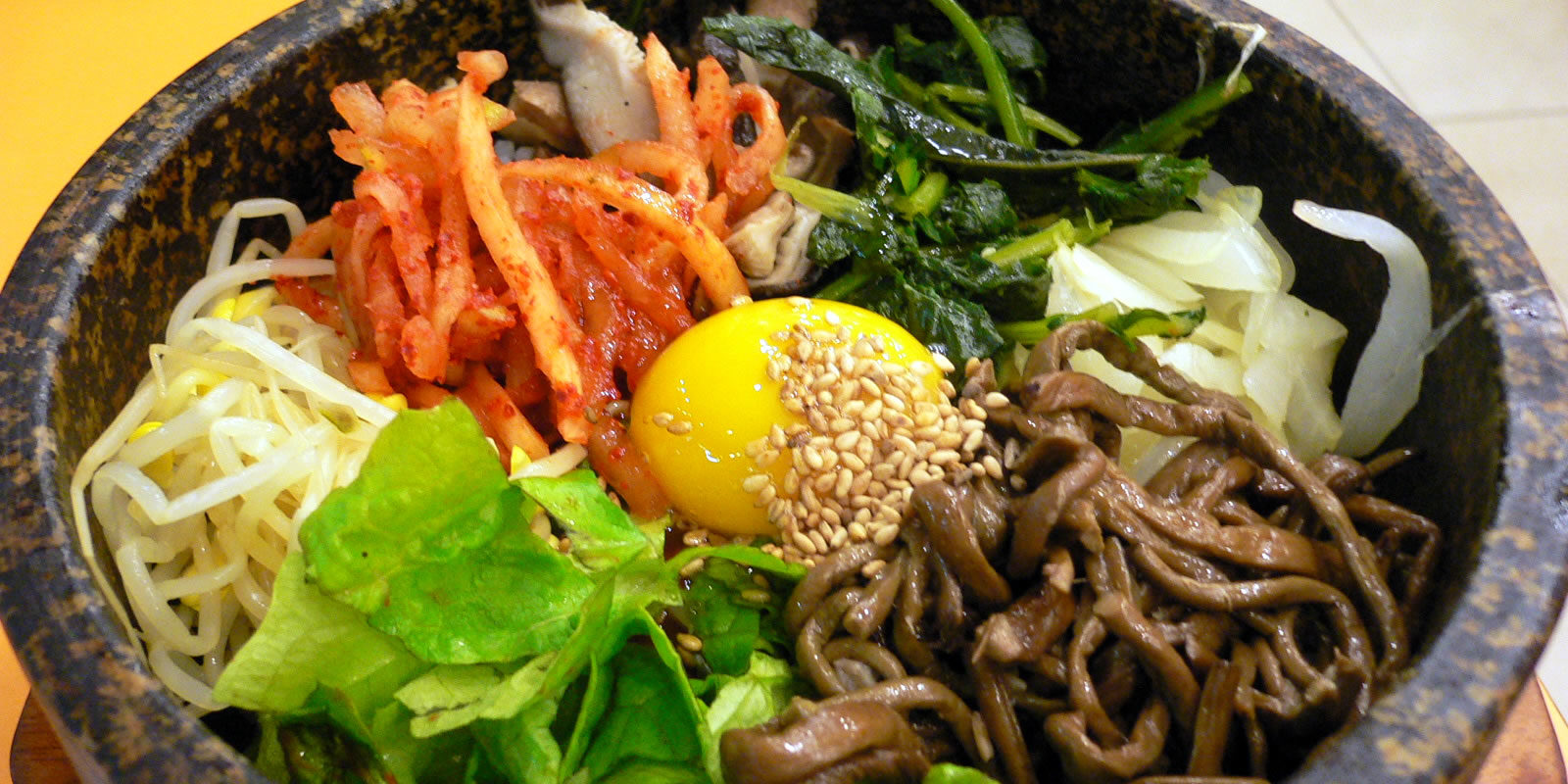Think rice meal in Korean food and you’ll most likely end up with bibimbap as its quintessential representative. Bibimbap means mixed rice and while it can be understood as anything as toppings, there still is a set of standard ingredients for a standard bibimbap. It is quite easy to deviate from the original, but the usual bibimbap has carrots, blanched spinach, gosari (fernbrake), bean sprouts, mushrooms, bulgogi (usually leftovers) and its visual crowning glory: the egg. Ah, but you absolutely cannot forget gochujang.
Visually, an unmixed bibimbap is amazing to behold and then when you mix it, the meal turns into something quite unappealing to the eyes – but there’s no point to an attractive presentation when the taste falls short. Bibimbap is a complete meal on its own and there are several varieties to it such as yukhoe bibimbap featuring seasoned raw beef as a topping and hoedeopbab that adds in raw fish, among others.
Bibimbap was borne out of a practical reason and this is to make use of leftover food in preparation for the New Year. Of course, New Year would mostly mean fresh start to many people. It is also believed to have been consumed by farmers as something that could easily feed a number of other farmers.
*photo source: http://photo.naver.com/view/2015051704161616760







